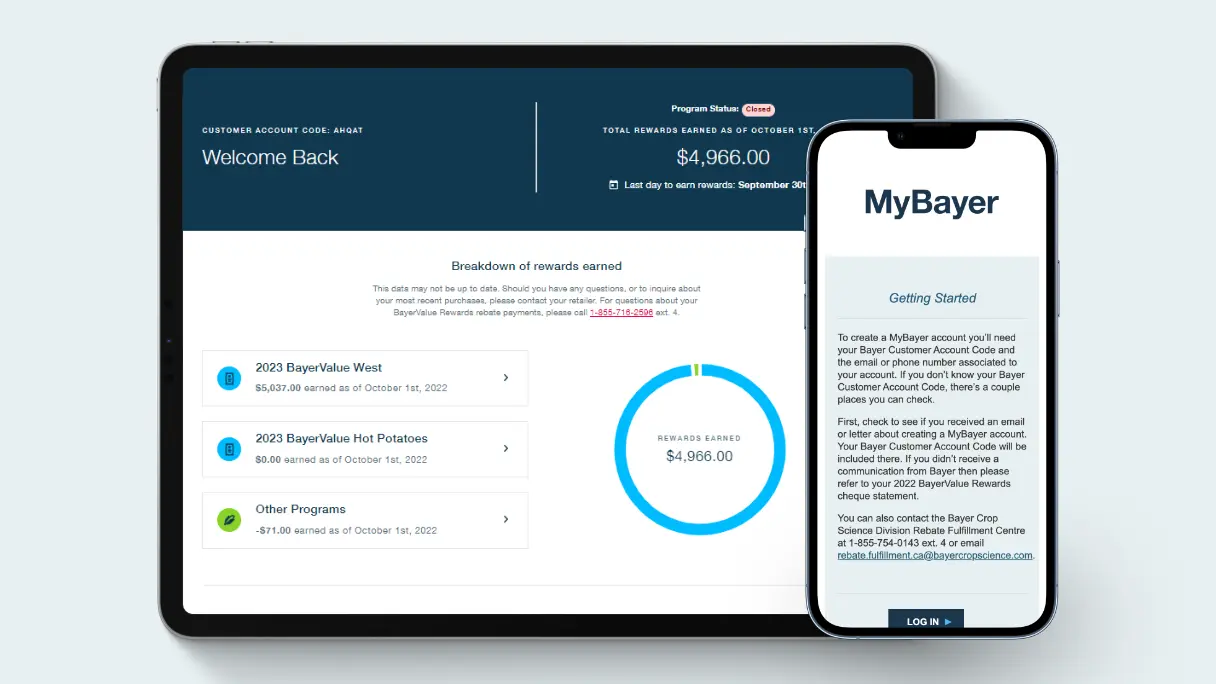How the global market determines soybean price per bushel in Canada
May 8, 2024
In a perfect world, you try to grow the best soybean crop possible. Harvest runs like a dream, and come fall, your crop is safely in the bin. But disappointment can still be just around the corner when you check the soybean price per 60-pound bushel. The price barely covers your investment in time, effort and capital. You might stop and wonder: how is the soybean price per bushel determined?
Canada is a minor player in the global price of soybeans per bushel
As most soybean growers understand, the soybean price per bushel isn’t determined at your local elevator. The price you receive is based on a number of global factors.2 For example, Brazil produces almost 40% of the world’s soybean supply. Canada supplies 2%. If conditions in Brazil don’t favour a bumper crop, the soybean price per bushel will rise accordingly. With Canada’s relatively small share of the global soybean market, however, we still don’t have the power to affect price, even in the event of low yields in Brazil.
The United States produces about 30% of the world’s soybean crop so their forecasted inventory can also move the per bushel price of soybeans in either direction.
Note: global commodity prices for soybeans are usually expressed in metric tonnes. One metric tonne of soybeans = 36.7 bushels.
Soybean prices compete with other oilseed crops such as canola
On the other side of the equation, the strength of the soybean oil market can also have a considerable influence on the soybean price per bushel. That’s where a stock-to-use ratio can apply.3 This ratio considers how much soybeans were in storage before this year’s crop was harvested.
Demand for end use applications can also affect the soybean price per bushel. For example, canola and soybean oils are both used for cooking and food processing. Depending on the relative price of canola or soybean oil, food processors may switch from one source to another. In many cases, consumers may not notice or realize the difference between a salad dressing made with canola oil or soybean oil.
Even a higher soybean price per bushel comes with strings attached
If market dynamics raise the soybean price per bushel, soybean growers around the world may increase their acreage to take advantage of those higher prices. But if more soybeans are grown, chances are the soybean price per bushel will fall as supply outstrips demand.
How to maximize your soybean yield
What’s a grower to do in this situation? Aside from seeking out limited, specialty soybean markets or rotating to another crop with better price prospects, your best bet is to grow the best crop you can. That starts with the DEKALB® soybean variety that’s right for your acres. Once that seed is in the ground, protect it with Bayer’s leading soybean crop protection products.
Use our soybean yield calculator
Want to get an idea of what soybean yield you can expect come harvest time? You can estimate beginning at the R5 stage of the crop but R6 will provide more accurate results. Here’s how to obtain a reliable estimate.
Step One: Measure off 1/1000 of an acre
On 15” rows, that will by 34.8’; 75.5’ on 7” rows.
Step Two: Count the number of podded plants in that length.
Step Three: Randomly select ten plants from that area. Count the number of pods on those ten plants. Once you’ve done that field work, estimate your likely yield with the DEKALB soybean yield calculator.
With a healthy crop in the field and an estimate of potential yield, you’re in good shape – no matter what the eventual soybean price per bushel brings!
